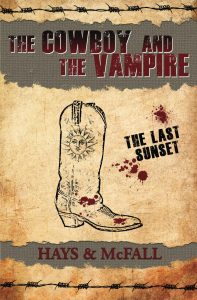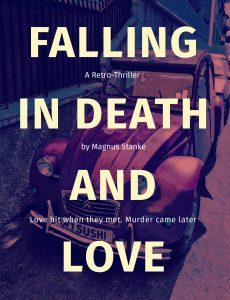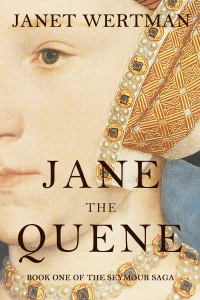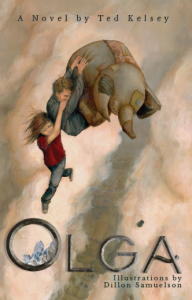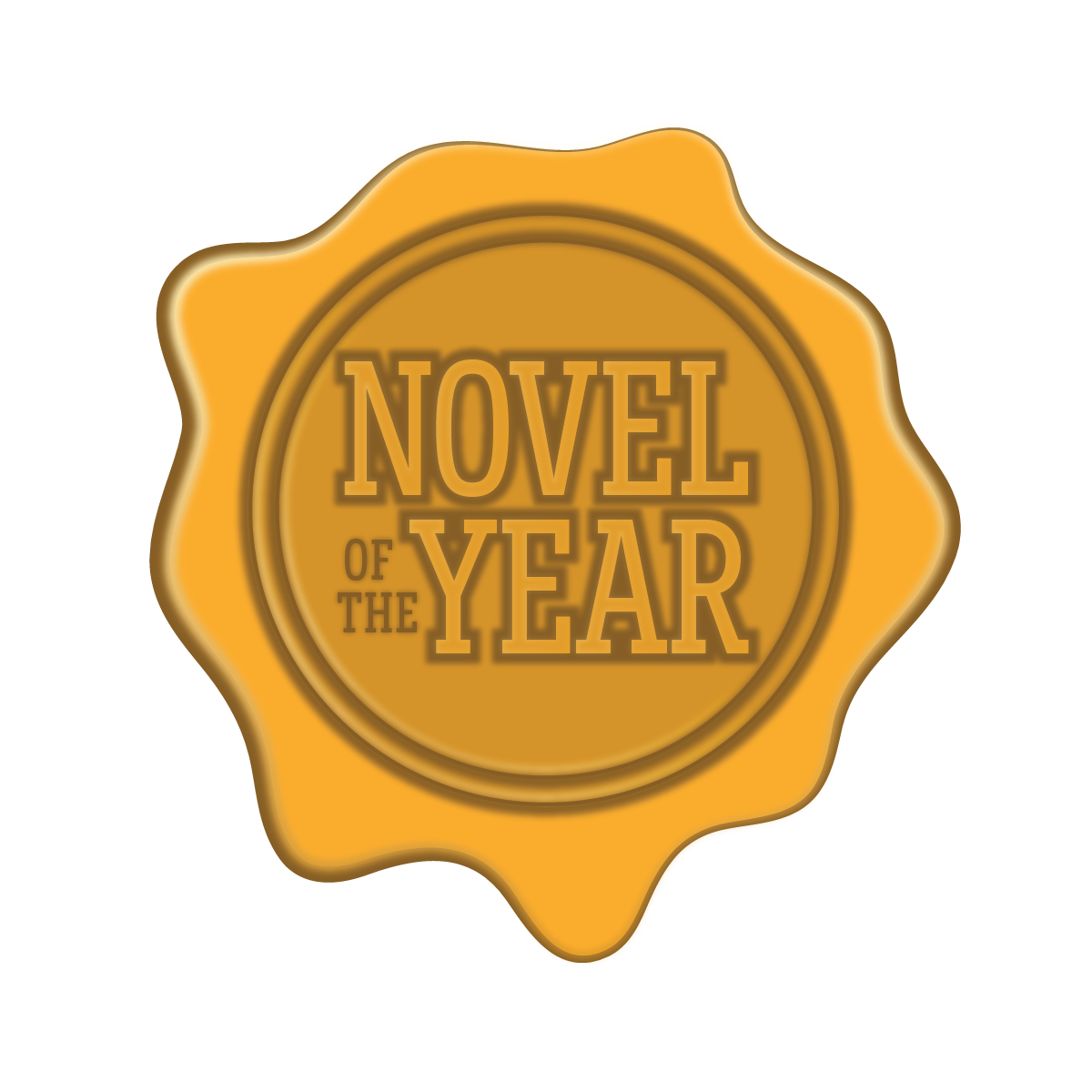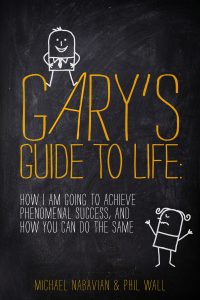The Rundown
The Recommendation
The Rating
The Links
The Reviewer
Lauren Faulkenberry
Visit Lauren Faulkenberry‘s website.In March of this year, my debut novel was published by indie publisher Velvet Morning Press.
My story probably isn’t very different from a lot of new authors. I’d shopped one of my novels around for a couple of years, sending queries to agents and big publishers. I played collect-them-all with rejection letters (when I received them at all) and lost hope. I set the manuscript aside, did other things for a couple more years, and then my long time friend and writing partner called me and asked if I’d read her manuscript she was getting ready to shop around.
“I’ll read one of yours in return,” she said.
I hadn’t been working on anything new for many months, but unearthed the manuscript that I thought was closest to being finished. (I’d written rough drafts of three novels at that point, but one I knew needed just one more hard rewrite, and it would be done.) We traded our manuscripts, made our comments and edits, and traded back.
“Come visit for a week,” she said. “Let’s make our own retreat and rewrite these books together. We’ll write queries and go the whole nine.”
So that’s what I did. I rewrote my novel. My friend finished hers first and sent it to VMP. They asked for it immediately.
Then my friend called me. “Hurry up and finish yours. My publisher is looking for new writers, and they want books like yours.”
This was the best shot I’d had so far. I finished my edits and sent the manuscript via email.
I waited.
A few days later there was a response. My heart sank. Quick responses are never good, right?
Wrong.
The email read: I had planned on reading your book when I went on vacation next week. I started it last night and couldn’t put it down. We’d love to publish it.
I had to read the email a dozen times to believe it. By this time, my friend’s book was out. I’d seen the cover. She’d told me what VMP was doing to help her, told me how supportive they were. “I feel like I’d never get this attention with a big publisher,” she said, and I agreed. I signed a series with Velvet Morning Press.
I know what you’re thinking: “Why keep submitting after all those rejections? Why not just self-publish?”
This is a personal decision you have to make based on your needs and your strengths. It’s true that self-publishing can get your book into readers’ hands fast. It can also allow you to have total control over your manuscript—something you won’t find with publishing houses. But it also means that you become designer, editor, marketer, and publicist for your book. If you’re prepared to take on those roles, or hire your own designer or editor, self-publishing may be your solution. But if you do the research and find an indie publisher that’s the right fit for you, you’ll gain an invaluable team that can help you with networking and publicity, as well as professional editors who can put the final shine on your manuscript.
Did I feel unbelievably lucky in finding my publisher? You bet. But luck is only part of this story. The rest is about perseverance, research, and partnerships. After my hiatus (those years my book lived in a folder in the guts of my laptop), I got serious about fixing the flaws in my book. I found some great resources and a top-notch beta reader. Can you replicate all of this? YES.
So you’ve written a book. Here are the top four things you can do to get your manuscript in a publisher’s hands, independent or otherwise:
1.Polish that manuscript to the best it can be. And I mean make it shine and sparkle. (A copy of Strunk and White’s The Elements of Style can be a lifesaver here.) Cut the unnecessary words. Correct the typos and get rid of all the angry red lines your word processing program so gleefully displays. When you think your manuscript is ready, revise it one more time. The draft I sent to my most trusted beta reader was easily the 9thor 10th draft. (This will get easier for you after time: I sent her my second novel in its 2nd draft.) The point here is that you want to send your absolute best work. Publishers and editors appreciate a book that doesn’t require a ton of editing on their part. Use your critical eye: you don’t want to look lazy here.
2. Get yourself a trusted beta reader.My writing partner is worth her weight in platinum. It helps that we’ve been friends for 14 years. We’ve read each other’s work for a long time (not always editing) and that means we’re familiar with each other’s style. If you’re looking for beta readers, try joining a writer’s group (in person or online). Connect with writers on social media and join groups on Facebook (just google “beta readers forum” and behold the results. Tip: find someone in a genre you like. If you don’t like horror, you won’t be the best reader for someone who writes in that genre. For me, beta reading is just as much about reciprocity as it is about improving a book. If you want to get good useful feedback, you need to dish it out.
Send your beta reader a complete polished draft. If your draft is too rough, you may not get the valuable feedback you need. When you’re first courting a beta reader, lay down some ground rules and ask them for the same. Are you looking for line edits? Are you looking for more general comments about plot points and characters? Do you have specific questions you want your reader to address? Share those in the beginning and give your reader things to look for. Remember, the more effort you put into a draft, the better feedback you’ll get. Ideally, you’re building a relationship here that will allow you to have a constant reader who will see your growth and be familiar with your style and tendencies, strengths and weaknesses. When you’re in the role of beta reader, be constructive and considerate with your critique: give the kind of feedback you want to receive.
3. Write a killer query letter.When you’ve polished your book and it’s the best it can be, you’re ready to query agents and publishers. Before you sit down to write the letter, though, you need a concise, attention-grabbing synopsis of your book. It should be punchy, short, and error-free. The Writer’s Digest site has compiled successful query letters that include annotations from the publishers and agents who were struck by them. There are common threads among the best queries, and Writer’s Digest goes into great detail about them. I pored over the WD letters when writing my query for Bayou My Love, and couldn’t have written my synopsis without it. TIP: Exchange synopses with your beta reader. It’s a huge help to have someone farther away from your book pinpoint what needs to be highlighted in the synopsis. You want this part to sing: it’s the blurb that will get your book read. You can’t be lazy about this part, either. (See the pattern here? You can’t be lazy about any part of this process.) Your synopsis should briefly summarize the main plot points of your book, but more importantly, it should reflect what’s at the heart of your story—the theme, the crux, the burning question readers want answered in your book.
4. Do your research. Take the time to check out the publishing houses you’re thinking of submitting to, and look at their recent releases to see what they’re publishing in your genre. Are they books you’ve heard of and seen promoted? What do their authors say about them? Have their authors published multiple books with them? What will this publisher do to help you? Lots of independent publishers are actively looking for authors. That means they’ll tell you what they intend to do for you. Look for pages on their website with titles like “Author Services.” Many include testimonials that can help you determine what kinds of support they provide for their authors. When you’re offered a contract, read it carefully and ask questions. Be respectful, but ask how the publisher approaches promotion and support. You’re entering a relationship with your publisher, and you want one that will meet your needs. Your time is valuable and the shotgun approach is tiresome. Searching for a publisher is like online dating in that way: you wouldn’t want to set up 30 random dates in a month and then cross your fingers, would you? No. You’d filter through the profiles and pick a handful of people who appealed to you the most. Put the same effort into playing matchmaker with your book and you’ll be a happy author.
Do these four things and you’re well on your way to publishing the best version of your book. Best case scenario: you sign with a publisher that is a great match for you and will help you grow as a writer. Even if you don’t find that perfect fit, or if you later decide to take the self-publishing route, your hard work is not in vain. You will have collected valuable feedback to help you improve your writing, you’ll have a better grasp on the moving parts of the publishing industry, and you’ll have a better understanding of where your book fits in the marketplace.
Additional links:
How to Write the Perfect Query Letter (The Writer’s Dig, Writer’s Digest)
The Complete Guide to Query Letters That Get Manuscript Requests (Janet Friedman)
Writing Successful Query Letter (Writers Store)
How to Hook an Agent With Your Query Letter (video via Writer’s Digest)
15 Ways to Find a Beta Reader or Critique Partner (www.jaefiction.com)


